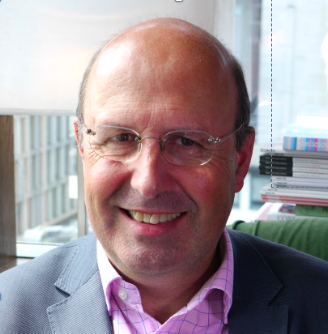You can sign up to our LinkedIn newsletter here.
As I work with Portfolio Executives in the early stages of developing their client portfolios, I encourage them to create compelling LinkedIn profiles. They should also post content regularly on LinkedIn and reconnect with their existing network.
A Spreadsheet Pipeline
The next step is to actively build a pipeline. I’ve found a straightforward rule of thumb to follow before getting into anything more sophisticated, like a CRM is that a simple spreadsheet will give you what you need to establish a pipeline.
But let’s clarify what I mean by a pipeline. You want a group of people you’re beginning to engage in dialogue with who will refer you to a potential client or are potential clients themselves. The emphasis is on enabling people to buy, which is the opposite of a hard sell. Allowing people to buy requires a certain amount of discipline and measurement.
When you start, I encourage you to create a list of 10 people you can contact. You already know these individuals who can either introduce you or potentially become clients. Almost everyone I work with finds it easy to generate an initial list.
Additionally, I encourage you to create a list of 30 individuals you can start contacting who could serve as potential prospects in the future. Lastly, I suggest you maintain a separate list of other contacts—individuals you’ve encountered whom you wish to keep track of and develop over time.
Three Buckets
So, what different approaches do you take with those three categories?
Top 10
The top 10 are what I would call active prospects. You follow up with these individuals to advance conversations and determine whether you can convert them into qualified leads, opportunities, and ultimately, new businesses.
To track progress, I always ensure I have a “next action” and a “next action date.” A spreadsheet typically includes the person’s name, LinkedIn profile, contact details, organisation, and whether they are a referrer or a potential client. The next action might be to email, call, follow up on a proposal, check in with them. There should always be an action identified as a next step.
If it becomes clear that they are no longer an active prospect, you should move them back into the list of 30 if you wish to continue nurturing them personally, or you might place them back into the larger pool—the generic audience.
Next 30
So, what should you do with that list of 30?
I would call these “active contacts.” These are people with whom you’ve built enough of a relationship that you want to communicate with them in a customised way. You’ll craft an email to them at least once a month containing something of interest. This might include something relevant, a reminder that you exist, an update that moves the conversation forward, or an invitation for them to reply.
If you are reaching out to about 30 people you want to contact once a month, this averages to roughly a couple of contacts per day. Regularly staying in touch, being mindful of their needs, and keeping them engaged is crucial to the nurturing process.
After a while, you might decide that a person is no longer an active contact—that you won’t do business with them or make a referral in the foreseeable future. In that case, move them back to the audience.
The Audience
The audience refers to the general pool of people to whom you want to send regular, generic communications. You might have a newsletter, a blog, or a brief update. These individuals are individuals that you want to regularly remind you of your existence and potential value, but you’re not creating customised communications for each one.
The art is to intelligently move people from your Top 10 into your Next 30 and from your Next 30 into your Audience. When your Top 10 decreases to 9, identify who from your Next 30 should enter your Top 10. If you have insufficient people in your Next 30, then you can run a campaign to your Audience to generate leads.
The whole point here is that you’re not constantly overwhelmed by numerous people to follow up with. Instead, you’re steadily working through a group of individuals with whom you can build relationships, ultimately enabling them to purchase your services.
Where are the Pipeline Candidates?
The next question I’m often asked is, how do you find people who are candidates to be anywhere in this three-layer structure? My answer is that you should always start with your closest relationships. You should feel comfortable calling these people, knowing they will return your call. They may not be prospects, but they are individuals whom you can ask for advice. You can explain what you’re doing and see what suggestions they might have about how to find potential clients.
Once you’ve exhausted those contacts, the next step involves people you identifying individuals through LinkedIn’s Sales Navigator with a refined search that specifies your niche. The temptation is to create a search that yields 10,000 results—or even a thousand, which can be quite daunting.
I encourage you to narrow the criteria by geography until you have between 100 and 200 individuals. Focus on CEOS because they are often the most straightforward buyers for your service. Then, review the CEO, the business they are running, and the key executives to determine if they have a gap for your particular Portfolio Executive role.
If they do, conduct more research—check their website, see what’s happening at Companies House, and find out who else works there. Discover where they stand as a potential prospect.
If you believe they have real potential, include them in your top 10 and seek a connection within your existing network through which you can reach them. Do you know anyone? Do you know someone who knows someone in that business? How can you obtain an introduction instead of making a cold call on LinkedIn?
Beyond Referrals
As your Portfolio Executive experience develops and grows, you’ll eventually move beyond direct referrals and immediate contacts. You’ll build a LinkedIn presence by using direct messages to create an entirely new universe of connections. However, in the beginning, this is the best place to start.
Conclusion
A simple spreadsheet pipeline tool will enable you to be more intentional in progressing relationships with referrers and potential buyers. You will be able to develop rhythms that build low-intensity business development into your working habits. Over time, you will be able to pick and choose your clients even more.

Charles McLachlan is the founder of FuturePerfect and on a mission to transform the future of work and business. The Portfolio Executive programme is a new initiative to help executives build a sustainable and impactful second-half-career. Creating an alternative future takes imagination, design, organisation and many other thinking skills. Charles is happy to lend them to you.
